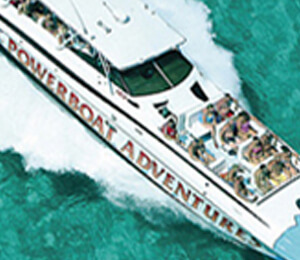The Bahamas, an archipelago of more than 700 miles off the coast of Florida, boasts a colorful history full of Spanish conquistadors, colonial Brits, plundering pirates and daring rum runners. The romance of islands’ seafaring history is evident everywhere along the spellbinding coastlines, from signature lighthouses to historic government buildings and eerie plantation ruins.
San Salvador Island
Considered by many to be the site of Christopher Columbus’s first landfall in the Bahamas, San Salvador Island is full of fascinating historic sites. Tour the 1887 Dixon Hill Lighthouse, visit the 1961 shipwreck site of the HMS Conqueror or explore the ancient archeological excavations of the Lucayan Indian settlement at Pigeon Creek.
Fort Fincastle and the Queen’s Staircase
The island of New Providence is The Bahamas historic heart, and the city of Nassau is particularly rich in island lore and antiquities. One of the most visited sites is the Queen’s Staircase. Dating back to the late 18th century, these 65 hand-hewn limestone stairs were built by slaves to provide safe passage for soldiers between the town and the fort, and later were renamed after Queen Victoria, who did much do abolish slavery in the colonies. Follow the palm-fringed steps from downtown Nassau to bow-shaped Fort Fincastle, built in 1793 to serve both as a lighthouse and a lookout for marauders. The reward for climbing the fort’s adjacent 126-foot water tower, originally utilized as a lookout and lighthouse, is an observation deck offering eye-popping harbor views.
Fort Charlotte
Largest and most interesting of the islands’ numerous forts, 18th century Fort Charlotte was named in honor of the wife of British King George III. Highlights include a drawbridge, waterless moat, underground passages, dungeons and ramparts, and costumed guides provide colorful insights into the monument’s history. This sprawling military complex is comprised of three forts: Fort Charlotte, Fort Stanley and Fort D’Arcy, and stands just five minutes from the center of Nassau, bordering on the city’s botanic gardens. Like the islands' other strategically placed forts, Fort Charlotte was part of a defense system so intimidating that potential invaders were too discouraged even to attack. A shot was never fired from Fort Charlotte.
Balcony House Museum
Said to be the oldest residential building in Nassau, the pretty pink Balcony House dates back to 1778 and was at one point the residence of Stephen Dillet, a notable Haitian-born Bahamian writer and politician. Later, the house was bought by American heiress Josephine Bryce, who furnished the timber-built home with elegant antiques from around the world. Of special note is a remarkable interior mahogany staircase said to have been salvaged from a ship.
Cat Island
Fishhook-shaped Cat Island in the Outer Islands is less than 50 miles long and only four miles across, but its romantically wild coastline abounds in intriguing historic sites. Of special interest are the old cotton plantation ruins, 1700s slave huts and Arawak Indian caves. Visit the miniature 1939 monastery atop Mount Alvernia, learn about Cat Island’s history at the Columbus World Center Museum in Knowles, or explore the romantic remains of Captain Andrew Deveaux’s antebellum plantation mansion.
Check out all of the Bahamas tours offered to see if there are any ways to get to see a historical landmark up close and personal.
